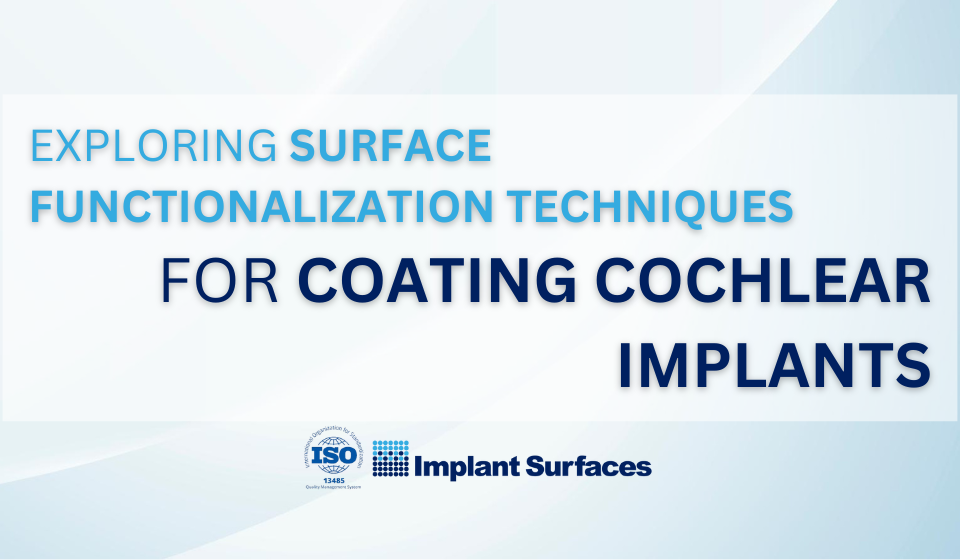
Innovations in Surface Coatings for Temporomandibular Joint (TMJ) Implants
May 5, 2024
Advancements in Biodegradable Coatings for Controlled Degradation of Orthopedic Screws
May 7, 2024In the dynamic field of implant dentistry, achieving optimal osseointegration stands as a pivotal goal in ensuring the long-term success of dental prostheses, particularly dental bridges. As patients increasingly seek durable and functional solutions to restore their smiles, surface engineering emerges as a forefront strategy in enhancing osseointegration and overall implant performance.
Surface engineering encompasses a spectrum of innovative techniques aimed at modifying the surface properties of dental bridge materials to promote osseointegration. These approaches leverage meticulous control over surface topography, chemistry, and energy to create an environment conducive to bone apposition and implant stability.
One of the primary considerations in surface engineering for dental bridges is surface roughness. Research indicates that controlled micro- and nano-scale roughness on implant surfaces can significantly enhance bone-to-implant contact and accelerate the integration process. By mimicking the natural irregularities of bone, such surfaces offer increased surface area for osteoblastic activity, facilitating robust bone formation around the implant.
Additionally, surface modifications such as the incorporation of bioactive coatings further augment osseointegration. Bioactive coatings, such as hydroxyapatite and calcium phosphate, possess inherent osteoconductive properties that promote direct bonding with bone tissue. These coatings not only enhance initial stability but also stimulate bone regeneration, fostering a seamless interface between the dental bridge and surrounding bone.
Furthermore, advances in surface engineering have led to the development of biofunctional coatings that actively modulate cellular responses at the implant interface. Functional groups, such as peptides and growth factors, can be immobilized onto the implant surface to enhance cell adhesion, proliferation, and differentiation. By orchestrating specific biochemical signals, these coatings facilitate tissue ingrowth and vascularization, ultimately contributing to superior osseointegration outcomes.
Innovative surface engineering approaches also extend to the realm of antimicrobial coatings, addressing the challenge of peri-implant infections. By incorporating antimicrobial agents, such as silver nanoparticles or antimicrobial peptides, onto the surface of dental bridges, these coatings effectively combat bacterial colonization and biofilm formation, safeguarding peri-implant health and longevity.
Moreover, the advent of nanotechnology has revolutionized surface engineering, enabling precise manipulation of surface properties at the nanoscale. Nanostructured surfaces exhibit unique characteristics that promote cell attachment and proliferation, offering unprecedented control over osseointegration dynamics in dental bridges.
In conclusion, surface engineering stands as a cornerstone in the quest for enhancing osseointegration in dental bridges. By harnessing the power of surface modifications, clinicians can optimize implant performance, longevity, and patient satisfaction. As research continues to push the boundaries of surface engineering, the future holds immense promise for further advancements in dental implantology, heralding a new era of functional and aesthetic restoration for patients worldwide.




